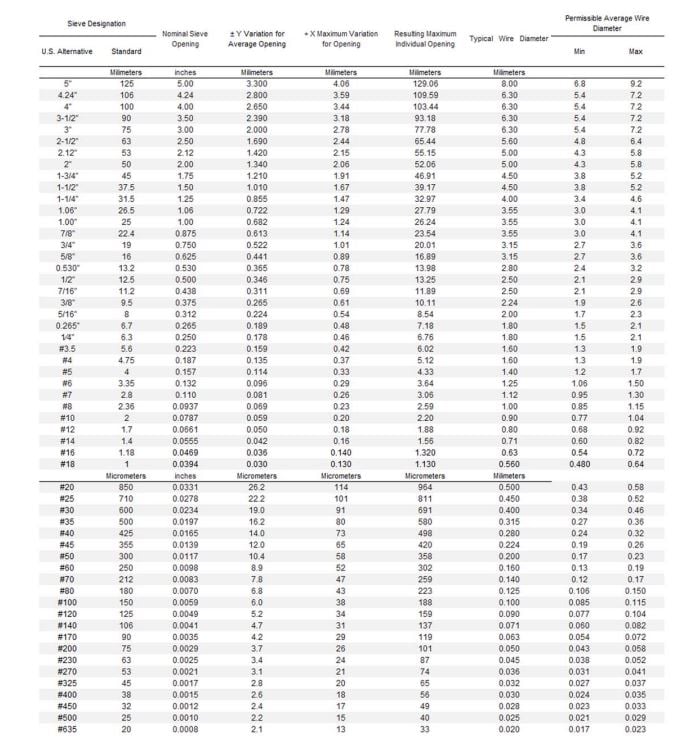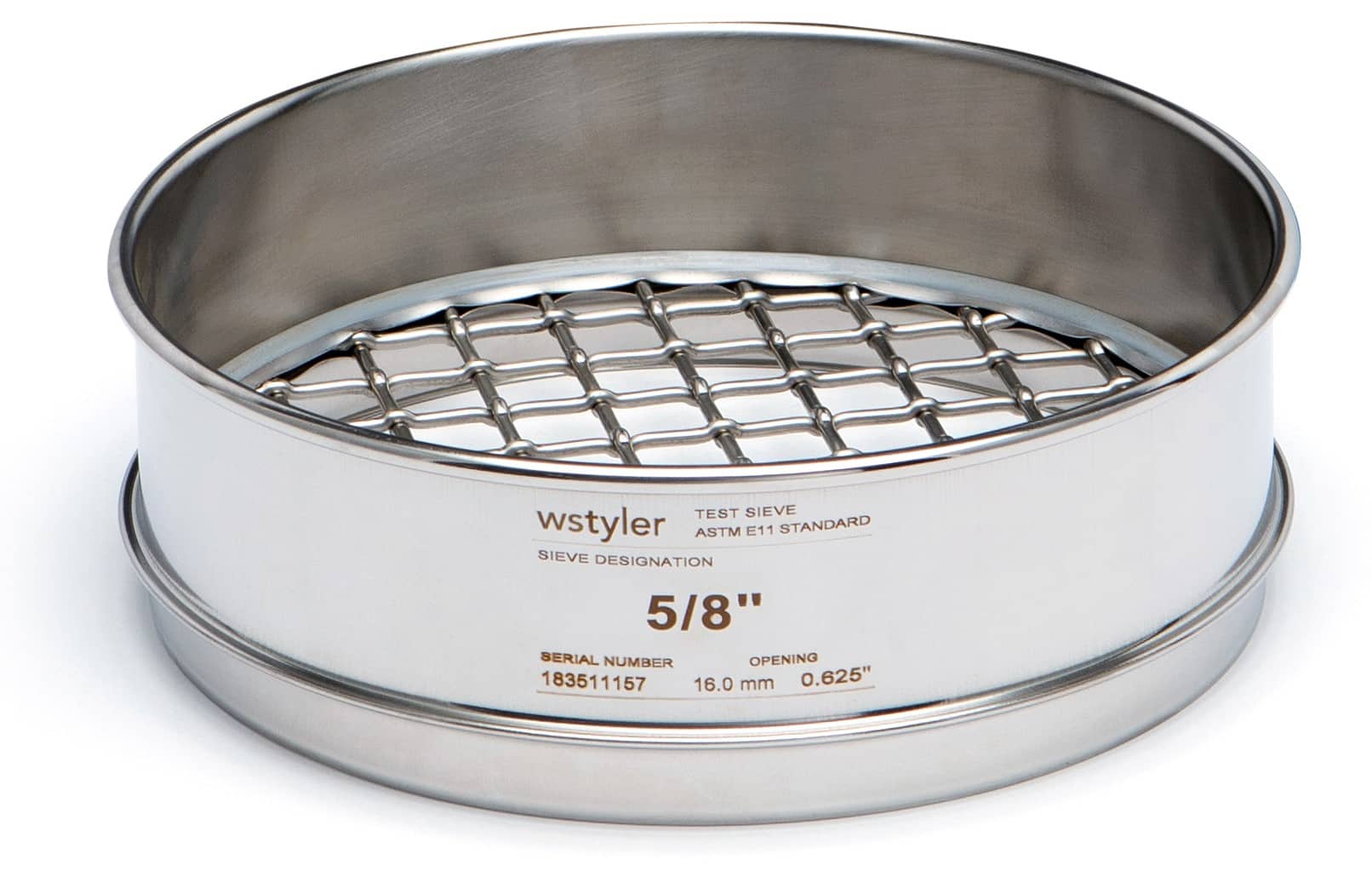A Calculator for ASTM E11 Standard Sieve Designations
Those that are in any way involved in the particle size analysis industry understand that it relies on precision and accuracy. For instance, with test sieve analysis, your sieve shaker, test sieves, and testing methods must align and complement each other.
Test sieves, in particular, can make this a daunting task as the sieves you use must be tailored to the material you are testing and constructed in accordance with the standards of your industry. Having said that, standards, such as the ASTM E11 standard, create universal guidelines that help lab managers implement quality test sieves that are accurate, making the sieve stack design process seamless.
But as not all manufacturers follow ASTM guidelines, it is essential to understand how to calculate all sieve cloth specifications to ASTM designations.
As W.S. Tyler has been an esteemed leader within the particle size analysis universe, we understand the impact reliable equipment has on achieving accurate and repeatable test sieve analysis results.
To help your team lead the way with ASTM compliant test sieves, this article was designed to deliver:
- What the ASTM E11 standard entails
- The importance behind ASTM E11 compliance
- How to calculate ASTM E11 test sieve designations
- W.S. Tyler’s involvement in the ASTM E11 standard
What Is the ASTM E11 Standard?
The American Society for Testing and Materials, or ASTM, is an organization that oversees the standards governing the techniques and methodology used to develop the materials, products, services, and systems that make up today’s market. In the world of particle size analysis, the ASTM E11 standard is one of the most prominent standards used throughout the industry.
This standard essentially dictates the fabrication of test sieves. If you analyze it further, the standard works to create set guidelines for sieve cloth opening size, the diameter of the individual wires, sieve frame height, sieve frame diameter, and the mounting for the sieve cloth.
Why Is ASTM E11 Compliance Important?
Implementing test sieves that are ASTM E11 compliant gives you a better chance of achieving accurate and repeatable test sieve analysis results. This, in turn, helps you deliver a product that you can proudly and confidently say meets customer expectations.
Calculating ASTM E11 Test Sieve Designations
Traditionally, tables such as the table pictured below were used to convert test sieve designations manually. These tables provide the nominal parameters and permitted variations for compliance, inspection, and calibration grade sieve cloth.

Fortunately, the W.S. Tyler team developed a calculator to help automate this process. It was designed to calculate the ASTM E11 designations as well as the nominal sieve cloth openings, Y variation based on average opening, maximum x opening variation, and maximum individual opening.
Additionally, it will generate the average wire diameter and the permissible range of choice. The calculator can be accessed below:
Are W.S. Tyler Sieves ASTM E11 Compliant?
All W.S. Tyler catalog sieves are assembled in accordance with ASTM E11 standards. Each W.S. Tyler sieve is accompanied by a certificate of compliance that states that the sieve has been identified to meet both ASTM and ISO requirements.
Now, we do have the capacity to fabricate custom sieves that utilize industrial mesh. These sieves are typically reserved for specialty applications and do not meet the requirements for ASTM E11 standards.
Pair Your Sieves With the Right Sieve Shaker To Yield Accurate Results
The ASTM E11 standard was created to govern the ways test sieves are fabricated to ensure each sieve made under the guidelines meet a specific level of quality and accuracy. As a result, the chances of achieving accurate and repeatable results increase.
But identifying test sieves that can consistently deliver accurate particle screening is just one of many steps needed to achieve accurate and repeatable results. You must also seek a sieve shaker, either mechanical or electromagnetic, that can both house your sieve’s diameter and provide enough agitation to help your material find the openings of the sieve cloth.
At W.S. Tyler, we strive to take the time and learn your process inside and out. This helps us develop equipment recommendations tailored to remedy your specific pain points.
To learn more about the sieve shakers we offer and get a better idea of which ones best suit your operation, we put the following article together to highlight the sieve shaker, test sieve pairings that work:
About Ronnie Brown
Ronnie is the Content Writer for W.S. Tyler and has four years of experience as a professional writer. He strives to expand his knowledge on all things particle analysis and woven wire mesh to leverage his exceptional writing and graphic design skills, creating a one-of-a-kind experience for customers.




